Art archive – recent exhibitions
2025
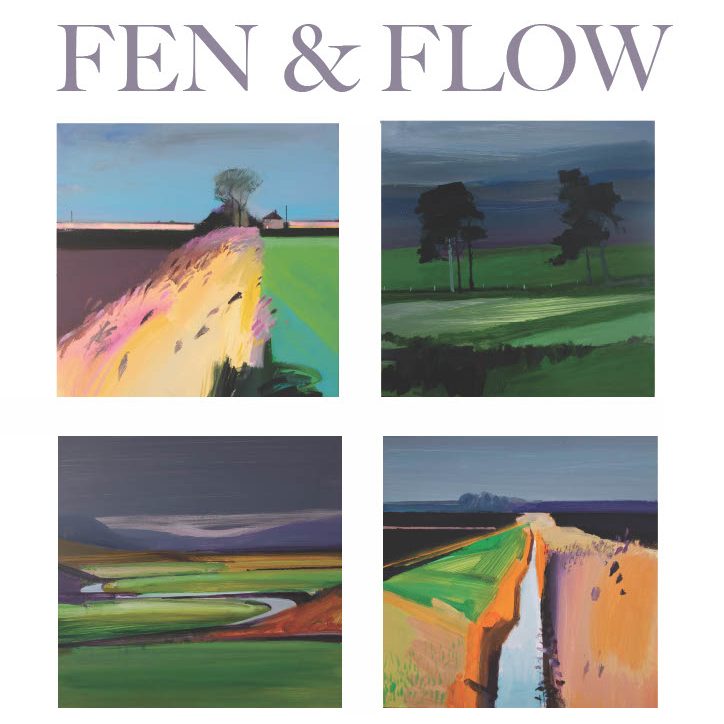
Fen & Flow: an exhibition of paintings by Fred Ingrams
Clare Hall is pleased to present an exhibition by Fred Ingrams, an artist inspired by the landscapes of the Fens and the Flow country of Caithness. Fred gives life, movement and vigour to overlooked landscapes of Britain. We hope that viewers will respond to these landscapes and be captivated as many before them.
Read more about the exhibition here.
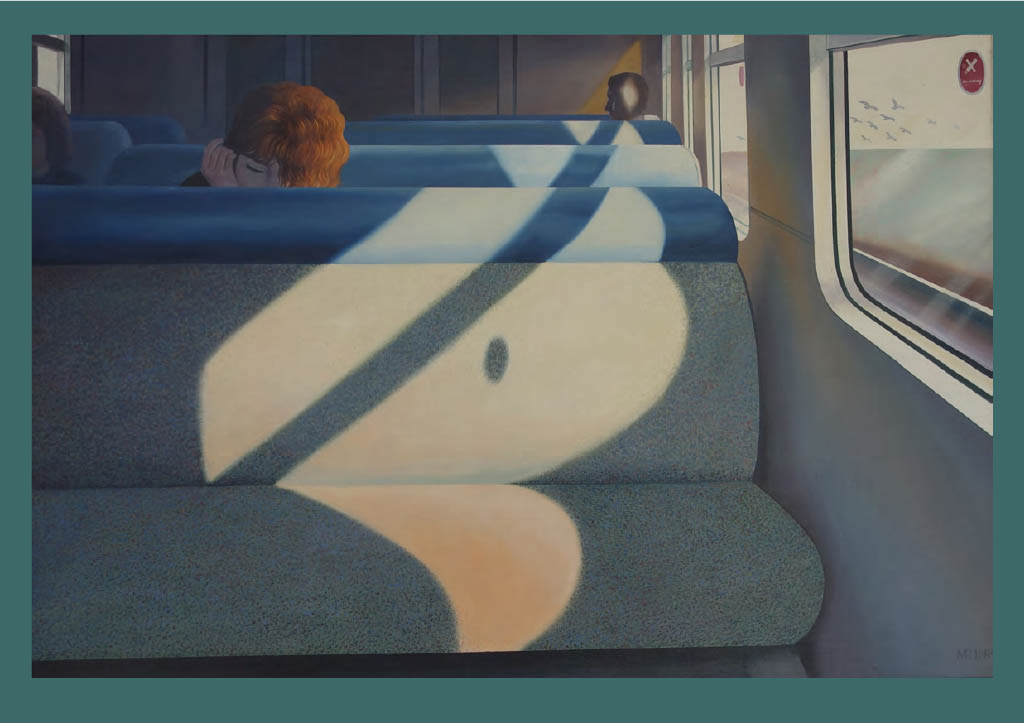
Malcolm Ryan: Swimming Against the Tide
Clare Hall is pleased to present an exhibition titled Malcolm Ryan: Swimming Against the Tide. The exhibition celebrates fifty years since Ryan’s 1975 exhibition at St Michael’s Hall in Cambridge, which was instrumental to developing his transition from abstraction to a figurative style. Over the years, Ryan has exhibited his work in Cambridge on a regular basis, including at the Fitzwilliam Museum and Kettle’s Yard. Clare Hall’s exhibition brings together the three paintings from Ryan’s original exhibition at St Michael’s Hall to public view, for the first time since 1975.
Read more about the exhibition here.
2024

Clare Hall Art Collection – A Selection
This exhibition, curated by Fiona Blake and Ann Kennedy Smith, features a selection of works from the Clare Hall Collection. The works were chosen to provide an exciting and varied show that has wide appeal.
Read more about the exhibition here.
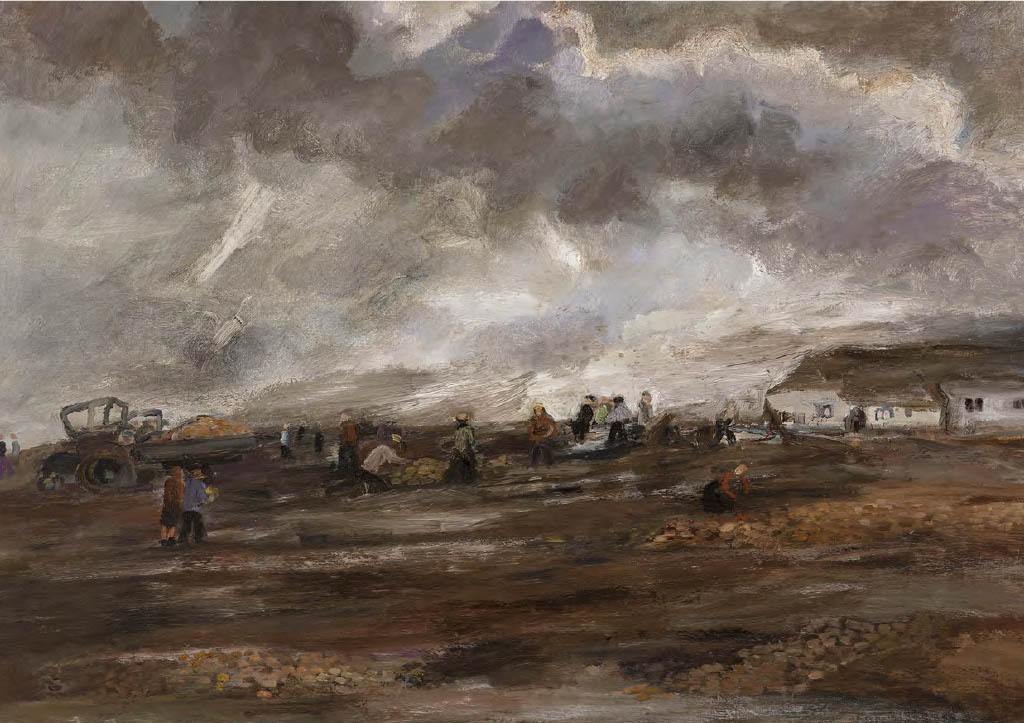
A selection of work by Sheila Fell
Clare Hall is proud to present a selection of work by Sheila Fell, in advance of a major re-evaluation of her art and career. A retrospective of her paintings and drawings will open at Tullie House Museum and Art Gallery in Carlisle, soon after the closure of this show, and will be followed in 2025 by the publication of Andrew and Eleanor Bradley’s catalogue raisonné, with the renowed art publisher, Lund Humphries.
Read more about the exhibition here.
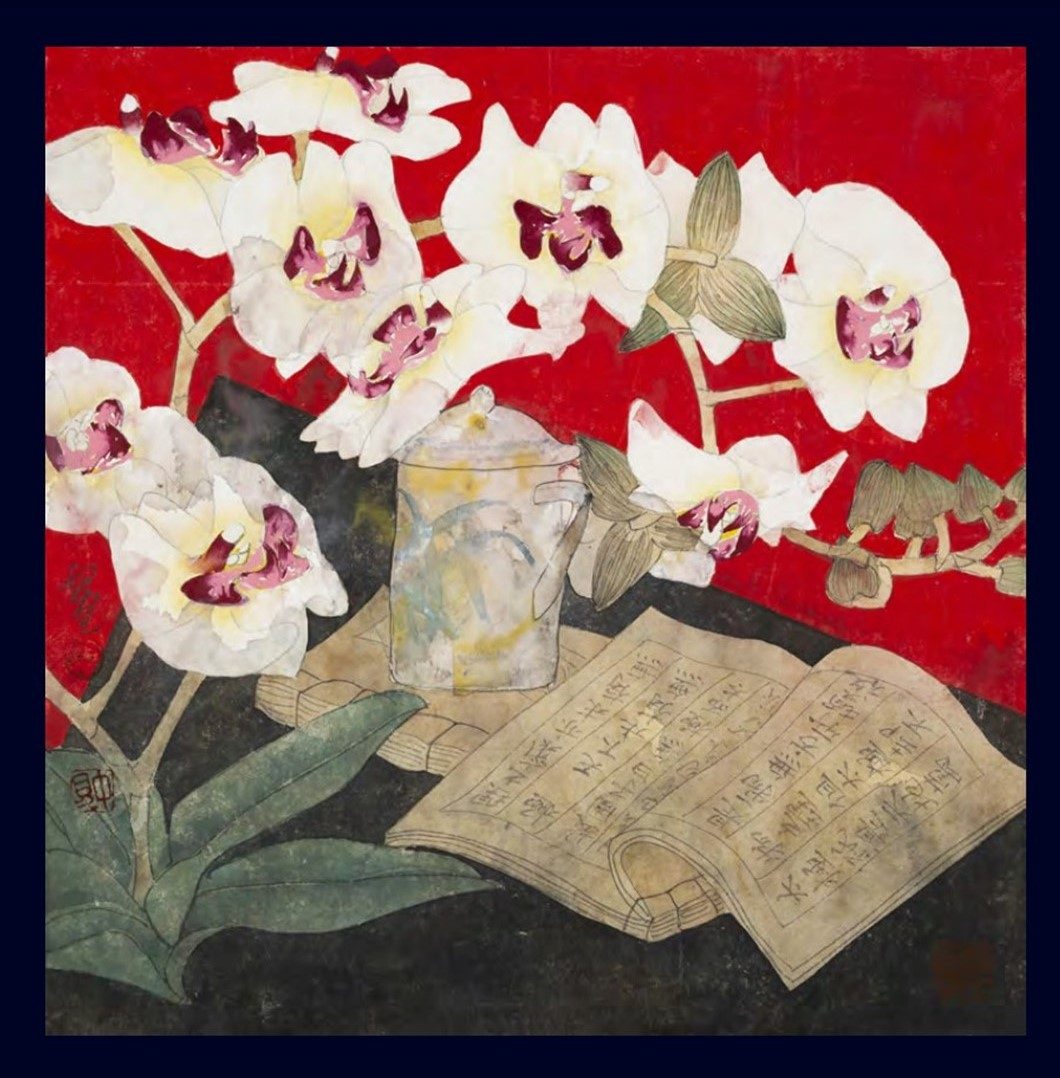
Ink’s Infinite Inspiration: Chinese brush painting by Lu Zhongjian
Clare Hall is delighted to present an exhibition of paintings by Lu Zhongjian. Although Lu Zhongjian is a renowned traditionalist in his use of imagery and technique, he is also very original. Lu brings an inventiveness to his handling of ancient traditions, showing us not only the beauty of peonies, but also how touching they look when they begin to fade and drop. Technically, he is immensely skilled, deftly changing his style with great agility to suit his subject, be it peonies, chickens, human figures or animals. Far from offering us a common use of ancient methods, Lu’s paintings are full of feeling and life. Clare Hall is fortunate to have such a display of work by this famous artist.
“Through this exhibition, I humbly hope to share a glimpse of that boundless inspiration–captured in the fluid pink of peony petals, the golden hues of orchids, and the rugged beauty of deep-sea fish–hoping that the fluidity and depth of ink might evoke in others a sense of the profound and limitless creativity it has inspired in me” – Lu Zhongjian
Read more about the exhibition here.
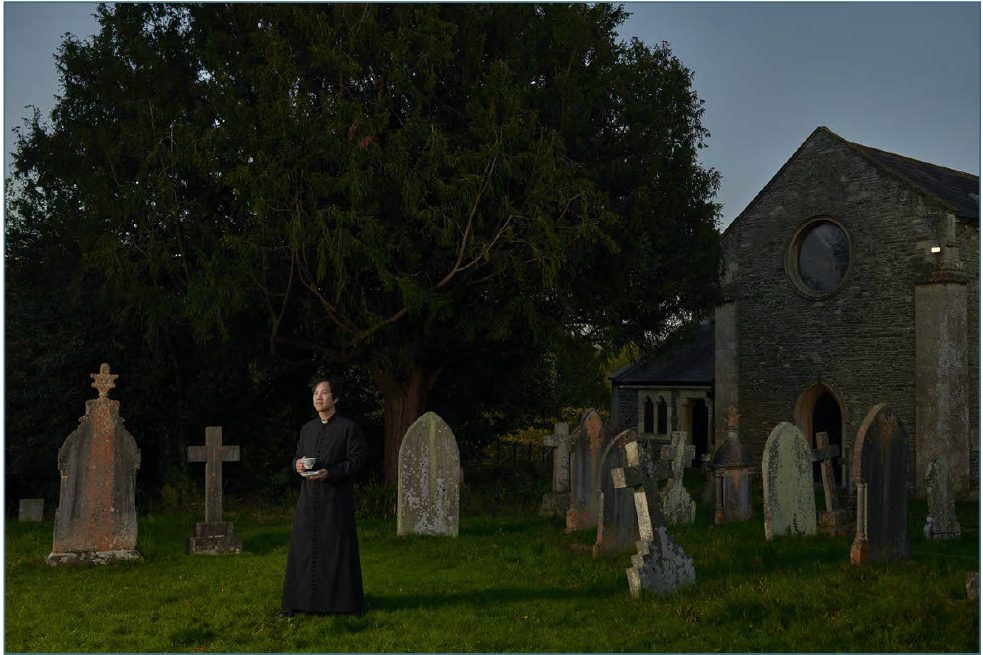
Eight Stories: Chinese identity in rural Britain, an exhibition of photographs by Jamie Lau
“When people ask where I am from, I reply ‘I am English’, anticipating the follow up question ‘Where are you really from?” – Jamie Lau
Clare Hall is proud to present an exhibition by British-born Chinese photographer Jamie Lau. The display of photographs was originally commissioned by the British Library, as an event to accompany their exhibition ‘Chinese and British’ from 2022-2023.
Read more about the exhibition here.
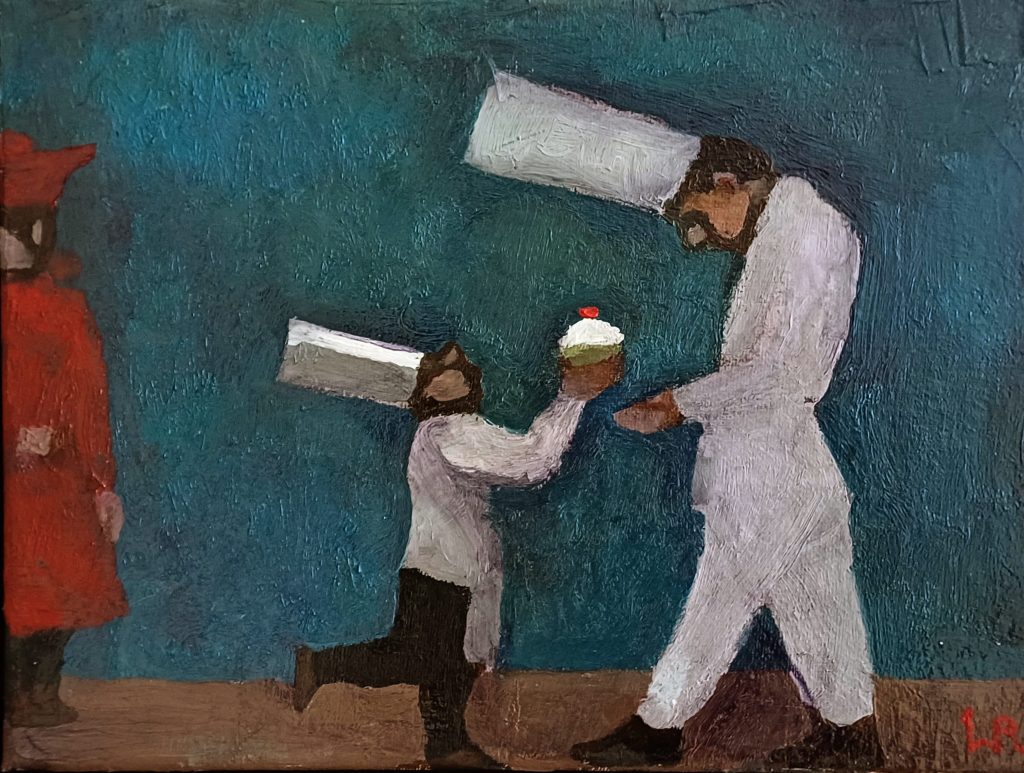
On the Chopping Block: cooks and other paintings by William Balthazar Rose
Clare Hall is honoured to present an exhibition of paintings by William Balthazar Rose. His cooks series are typically painted on wood panels or stretched canvas, and more recently the artist has used large wooden chopping blocks which he has constructed himself. ‘The chopping block was in part a response to the economic difficulties of framing and in part a creative rebellion,’ he explains. ‘I thought my cooks seemed abject themselves, often so miserable that one then found them funny.’
Read more about the exhibition here, and the exhibition’s review in Varsity here.
2023
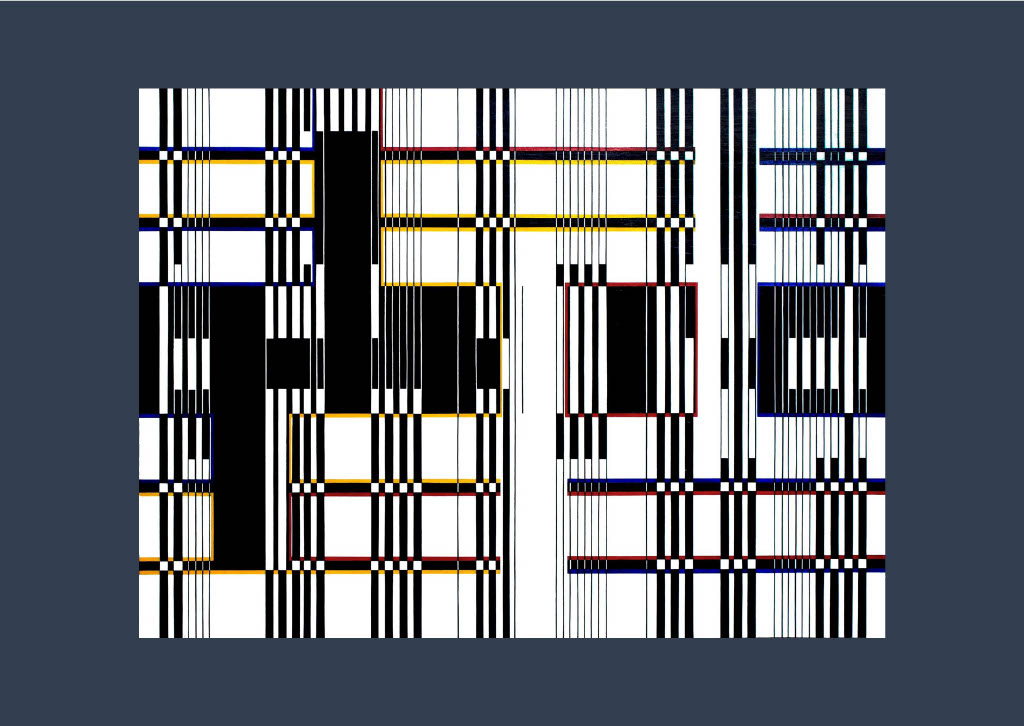
Kathleen Hyndman: A Mathematical Artist and Her Lifelong Task
Clare Hall is proud to present a memorial exhibition of the work of the Kathleen Hyndman (1928-2022). Her art is made powerful by her adoption of a constructed and sequential approach. ‘My work often originates from natural effects,’ she once said, instancing trees in the mist, shadows, or movements of water. But these visual stimuli are then transposed into various geometrical and mathematic sequences of tone, colour, rotations, intervals and shape.
The mind-and-eye control in the execution of these hand-made works is breath-taking. It becomes evident that behind this intercourse between mathematics and art is an unremitting search for truth.
Read more about the exhibition here.
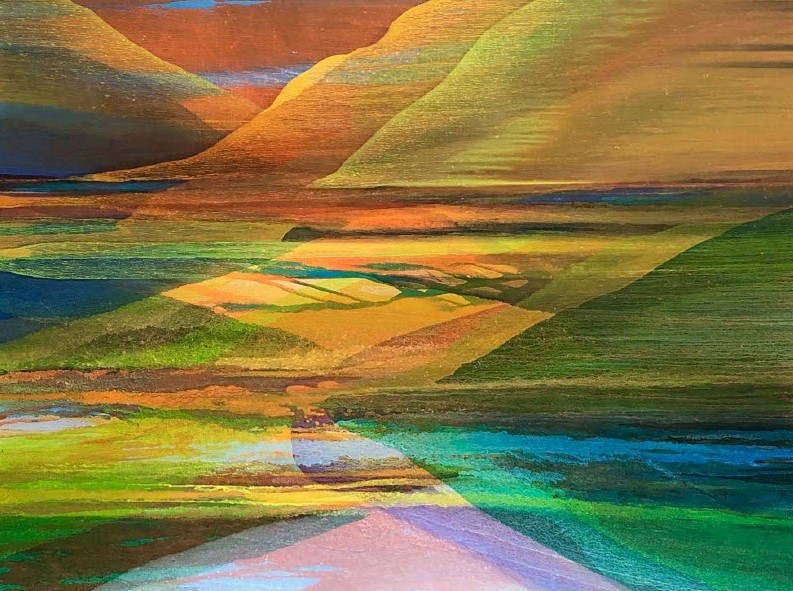
‘Cycles of influence: art shaping art’, an exhibition of paintings by Tess Recordon
Tess Recordon is a painter who studied Fine Art at the Byam Shaw School of Art (now part of the University of the Arts London) and has been working as a painter since graduating in 1991. She is represented by galleries and agents in Cambridge, London, and Cornwall. Her work often features contemporary landscape oil paintings that are inspired by the unexpected drama and beauty of places she has visited. She has worked on a large scale for many of her paintings.
Tess has travelled around the world absorbing impressions of the land and art work she admires. Back home she allows the pouring of paint to operate as an encounter with those influences in memory. As the image emerges it echoes the landscape back to her until she is satisfied that it has fully spoken.
Read more about the exhibition here.
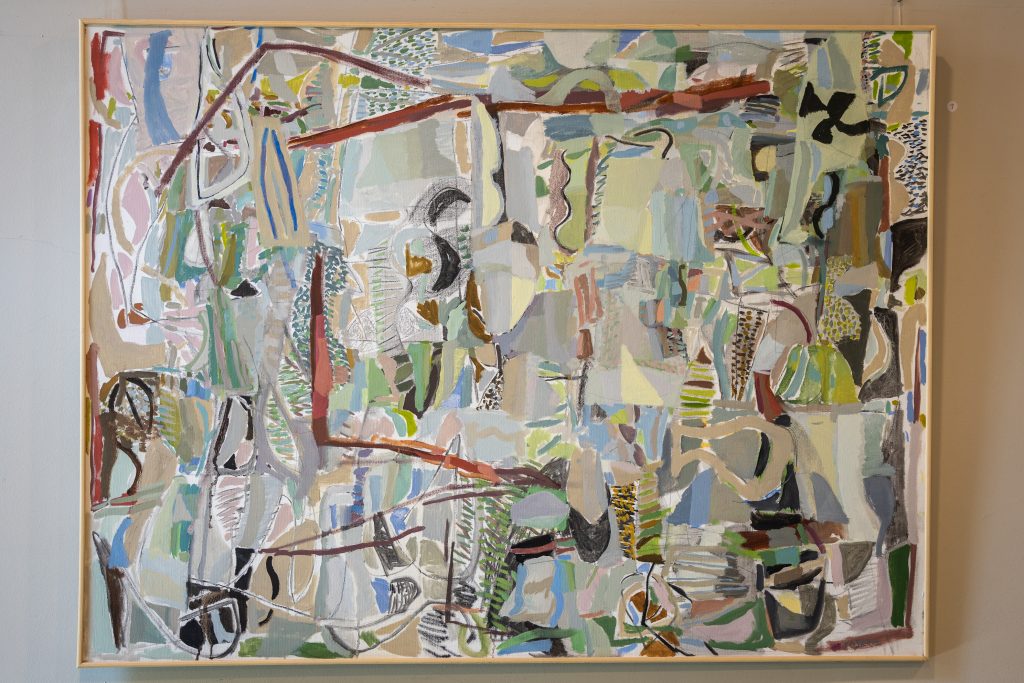
‘Passages of Light’: exhibition of paintings by Cambridge artist Oliver Soskice
On the 8th of June 2023, Clare Hall previewed an exhibition by Cambridge artist Oliver Soskice, titled ‘Passages of Light.’ It was a warm and welcoming event enhanced by the late afternoon sun, criss-crossing from the side windows of the Common Room. Among the audience on that occasion was Martin Gayford, a well-known art critic and a leading authority on Lucian Freud and David Hockney. Equally welcome were the many comments that filled up the Visitor’s Book during the run of the exhibition. Among them was an admiring comment from artist Mark Cazalet, a former exhibitor at Clare Hall.
The exhibition ran until the 20th of July and was largely successful. Several pieces were sold, and the exhibition was greatly enjoyed by members of Clare Hall, as well as many visitors from outside of College.
Read our feature on Oliver Soskice here.
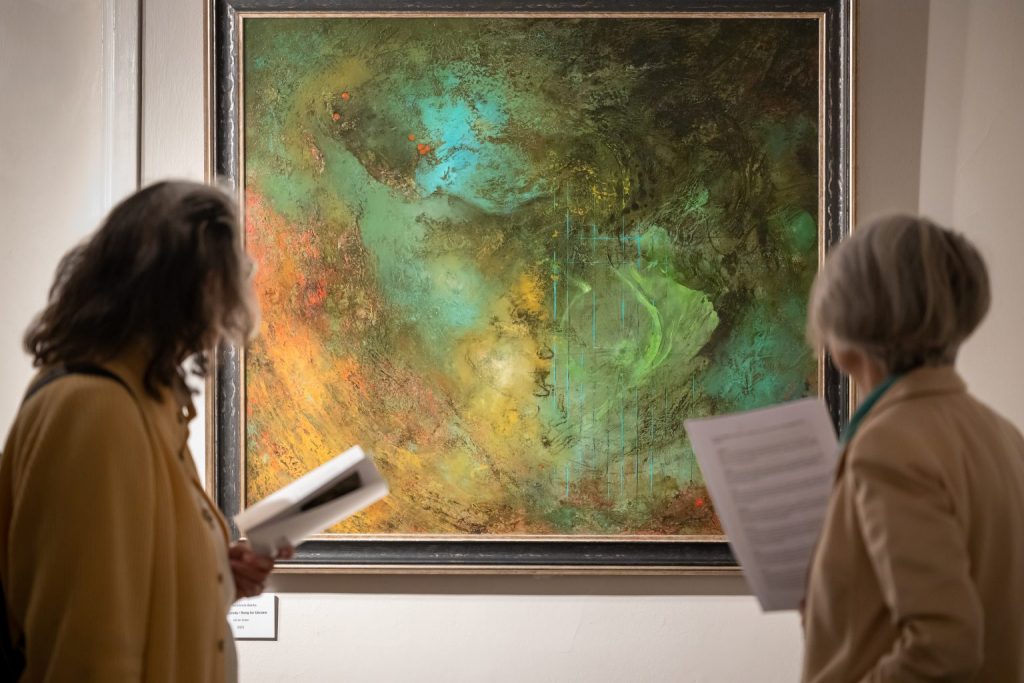
Jill Swarbrick-Banks: Transcendental Landscapes
It is a pleasure to present in this exhibition a set of landscapes by Jill Swarbrick-Banks that may be unlike any landscapes you have seen before. Whether classical or romantic, sublime, or picturesque, landscape painting has contributed significantly to the history of British art, in one form or another. After the Spanish American philosopher George Santayana stated that the English are governed by an inner atmosphere, ‘the weather in their souls’, Kenneth Clark proceeded to argue that English weather and its soft luminous atmosphere have had a determining influence on English painting, poetry and even English thought.
Jill Swarbrick-Banks has not been confined to England in her choice of landscapes to paint and, though weather may be an ingredient in some of these pictures, agency has also been gifted her through the play of memory, by the inspiration of certain kind of music, and by her deep fascination with the properties of paint. Sometimes the atmosphere created is both luminous but also disturbing. It feels as if we have stepped off the familiar path of landscape painting and entered a new zone.
– Professor Frances Spalding, Chair of Clare Hall Art Committee
Read further details here.
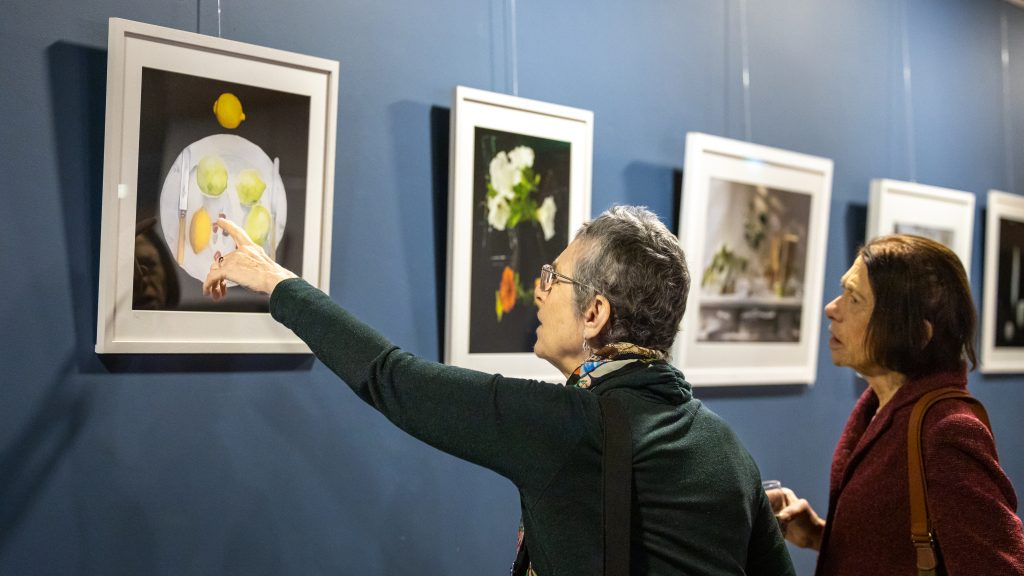
Light. Time. Space. – an exhibition of photographs by Robin Stemp
Clare Hall Art Committee presented recent work by Robin Stemp from 20 January – 2 March 2023. Robin is a Cambridge-based photographer who captures enigmatic still lifes and unpopulated interiors, as well as unusual aspects of the built environment seen on her travels. Her work is calm and restrained, suggesting narratives which are open and inconclusive. The scenes seem to draw the viewer in, imaginatively, and invite interpretations from the individual’s personal experience.
Exhibition details:
The artist writes: ‘If I have to sum up the one essential point of my work, I would say it is the light and the timing of that light. Light and time and the idea of something happening. Not last week, not tomorrow, but now, today, this minute. At other times, maybe, the mood is one of expectancy – is someone about to come into the room and sit on the single chair – or have they just left? This applies even to a painted background – something entirely artificial – the light is still a creator of mood and atmosphere.‘
Read further details here.
2022
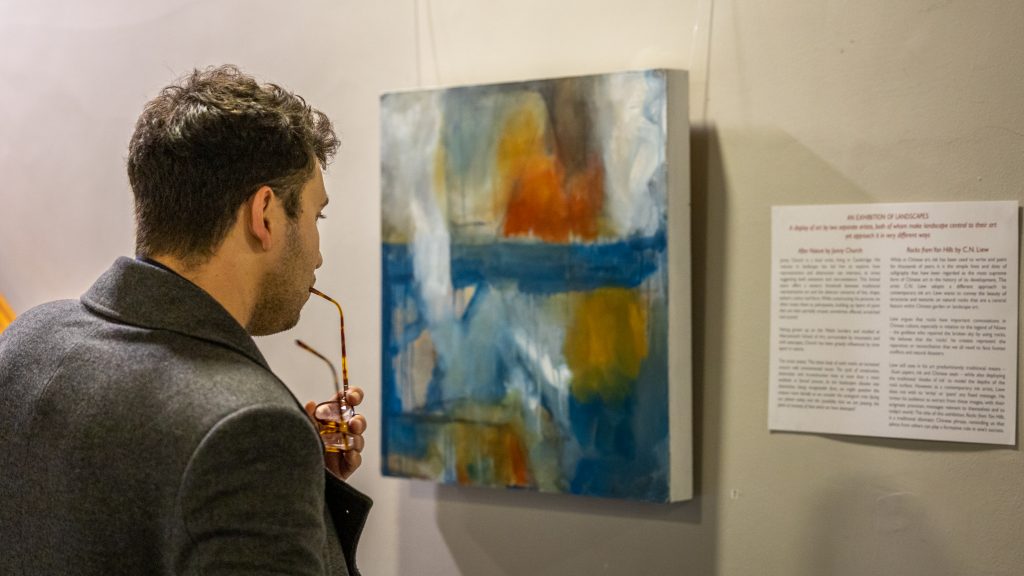
‘After Nature’ by Jonny Church and ‘Rocks from Yon Hills’ by C.N. Liew – an exhibition of landscapes
From 25 November 2022 – 5 January 2023, Clare Hall Art Committee presented two exhibitions inspired by landscapes, exploring the tension between the environment and the influence of man. Oil paintings by Jonny Church were juxtaposed with ink art by C.N. Liew in Clare Hall’s Main Site.
Exhibition details:
Jonny Church is a local artist, living in Cambridge. His interest in landscape has led him to explore how representation and abstraction can intersect, at times suggesting both existence and non-existence. This liminal space offers a sensory threshold between traditional representative art and the abstract concerns of line, shape, pattern, colour and form. C.N. Liew works to convey the beauty of structures and textures on natural rocks that are a central feature within Chinese garden or landscape art – a tradition admired by generations of Chinese dignitaries and intellectuals. He argues that rocks have important connotations in Chinese culture, especially in relation to the legend of Nüwa – the goddess who repaired the broken sky by using rocks.
Find further information on this page.
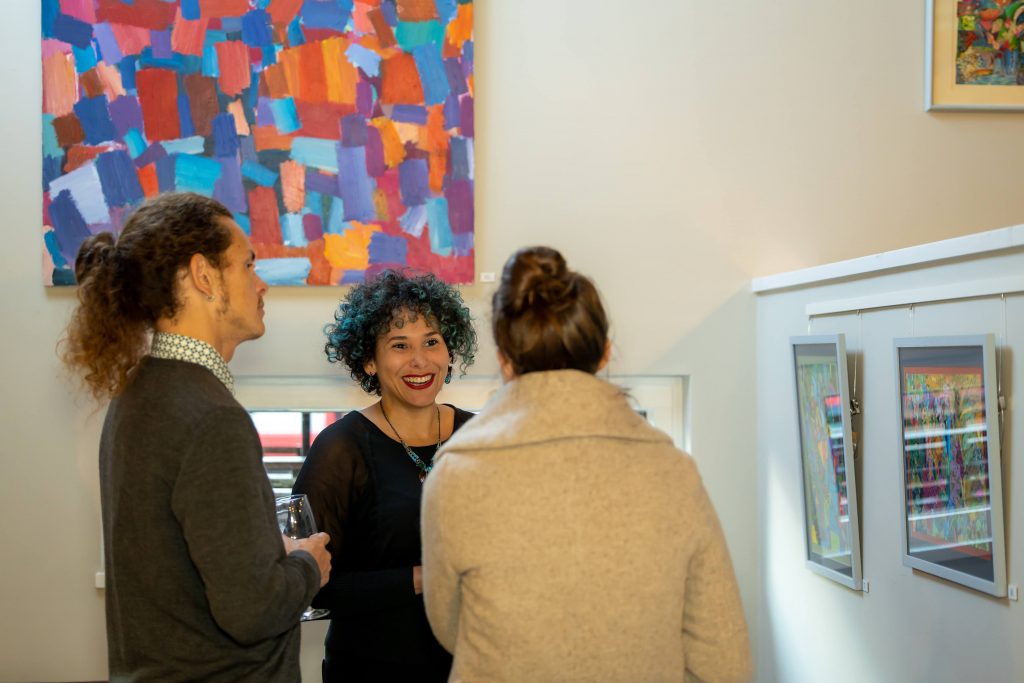
A Feast for the Eye – an exhibition of paintings and collages by Jerry Scott
From 30 September – 17 November 2022, Clare Hall presented an exhibition by Jerry Scott, representative of the artist’s work over the last twenty years.
Exhibition details:
Jerry Scott’s collages have rightly been called a journey through colour and texture, offering an experience of great richness and depth. Their characterful material presence owes much to the fact that he designs and prints his own papers, many of which are close-patterned and therefore add to the density of the overall effect. Damascene – Night Weaver is an example of just how immersive these collages can be: beautifully crisp in its arrangement of forms, it simultaneously shimmers with small dots of light. Many artists who use collage let in chinks of the ground beneath the collage, to point up the play between artifice and reality in the making of art. But Scott’s collages have a firmness and completeness that disavows teasing distractions. Instead, there is a strong sense of the physical involvement in the chopping, cutting, and abutting of one piece next to another.
Find further information on this page.
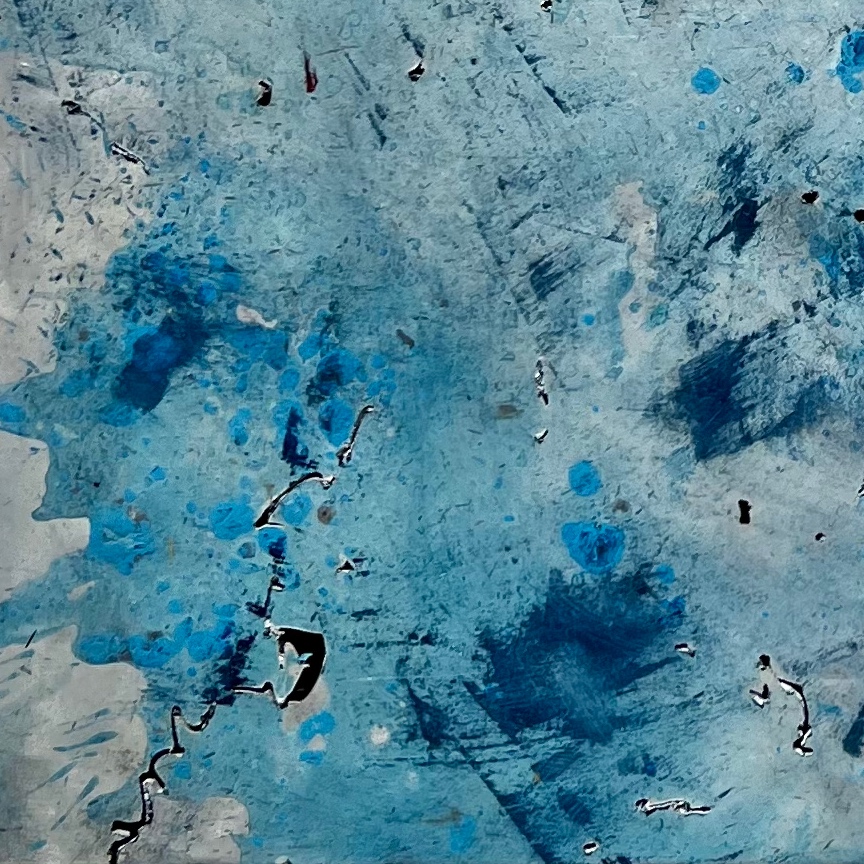
almost unthought – experimental works in aluminium by Silvano Cattai
From 23 June-4 August 2022, Clare Hall Art Committee shared an exhibition of works in aluminium by Silvano Cattai. Based in Seravezza (Lucca, Italy), since the early 1990s Cattai has devoted himself to sculpture, developing his personal research and showing at several European art galleries. In the meantime he has realised monumental and public sculpture around the world.
Exhibition details:
almost unthought represents a bold approach to painting in which the metallic surface manifests as physical, like sculpture, cutting the space and interacting with light. This will be the first time these works have been exhibited. ‘I feel these new works are the culmination of all my experience…’ says Cattai, ‘all the different aspects of art and lighting and filmmaking brought into one.’
In recent years, Cattai has worked primarily as a sculptor, creating over 40 works commissioned by a private collector in Switzerland, 10 of which were monumental, and 18 aluminium paintings. During this period he travelled frequently to Switzerland and rented a small studio in Geneva, where he evolved his technique using plasma to cut steel, then produced prints on paper, using the steel plasma as a matrix. ‘I began to see colour in a whole new way,’ he says, ‘I understood that I was going to become a painter again..
Plasma, a working tool that reaches extremely high temperatures in order to cut steel, compelled Cattai to develop a methodology within which he could explore a new way of painting. Having left New York in 1989, where he was a painter and filmmaker, Cattai settled in Pietrasanta near the western coast of Tuscany and began to work exclusively as a sculptor in stone, bronze and metal. His mastery of the plasma-cutting method for steel brought him back again to painting. ‘The period of time I spent away from painting allowed me a burst of spontaneity, the unthought gesture.’ Aluminium, as a substance, allows Cattai to create a dialogue between sculpture and painting. The lightness of movement, the speed and the urgency of the gesture that he has developed with the plasma are evoked in the immediate and essential application of colours in this new pictorial language.
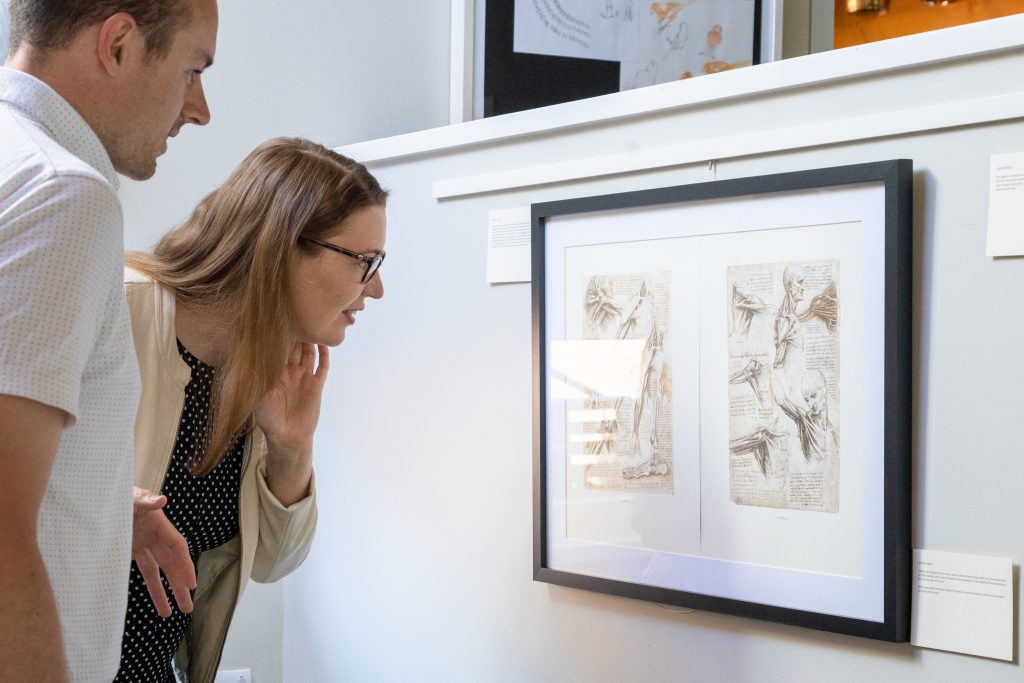
The Art and Heart of Leonardo – artistic anatomy then and now
Running from 5 May-16 June 2022, Clare Hall Art Committee presented The Art and Heart of Leonardo, an exhibition chiefly of Leonardo da Vinci’s anatomical drawings, as seen through contemporary eyes. This exhibition was co-curated by Professor Roberta Ballestriero (Accademia di Belle Arti, Venice) and Francis Wells (an Honorary Fellow of Clare Hall).
Exhibition details:
Dissecting the hearts of oxen and working with intuition, Leonardo described, with astonishing precision, the anatomy and workings of the heart long before William Harvey posited the circulation of the blood. Leonardo was a profound lateral thinker and applied his ideas in functional anatomy across species. This allows us to draw a parallelism between his analysis of birds’ wings and photographs of birds in flight taken by Owen Burke, who has kindly lent these to the exhibition.
As an artist fascinated by both art and science, Leonardo was able to see things that many could not. This has inspired the investigative and imaginative contemporary drawings made by students of the Accademia di Belle Arti, Venice, while studying an innovative course on ‘artistic anatomy’, conceived by Professor Mauro Zocchetta. We are grateful to the Accademia di Belle Arti for the loan of some of these drawings. It is hoped that this broader approach to Leonardo and his legacy will result in an exhibition that invites engagement at many levels of academic interest.
We are especially grateful to co-curator Francis Wells, a cardiac surgeon at the Royal Papworth Hospital, who is also the author of a scholarly book titled The Heart of Leonardo, as well as an Honorary Fellow of Clare Hall. His book demonstrates the accuracy of Leonardo’s observation and physiological reasoning. Leonardo himself never published his anatomical knowledge, as he intended to do, and it can therefore be regarded as another of his great unfinished projects. Only in the late twentieth century did his achievements in describing the detailed function of the heart begin to be appreciated; and only latterly has his work received wide recognition.
Previous versions of this exhibition have been shown abroad. It is very appropriate that Clare Hall, a forward-looking college, should be the first place to show it in England. We are extremely grateful to Francis Wells for loaning us facsimiles in his possession, for the time and attention he has given to their presentation, and, above all, for all the insights he offers into Leonardo’s work. Such generosity will entice and reward many visitors to this exhibition.
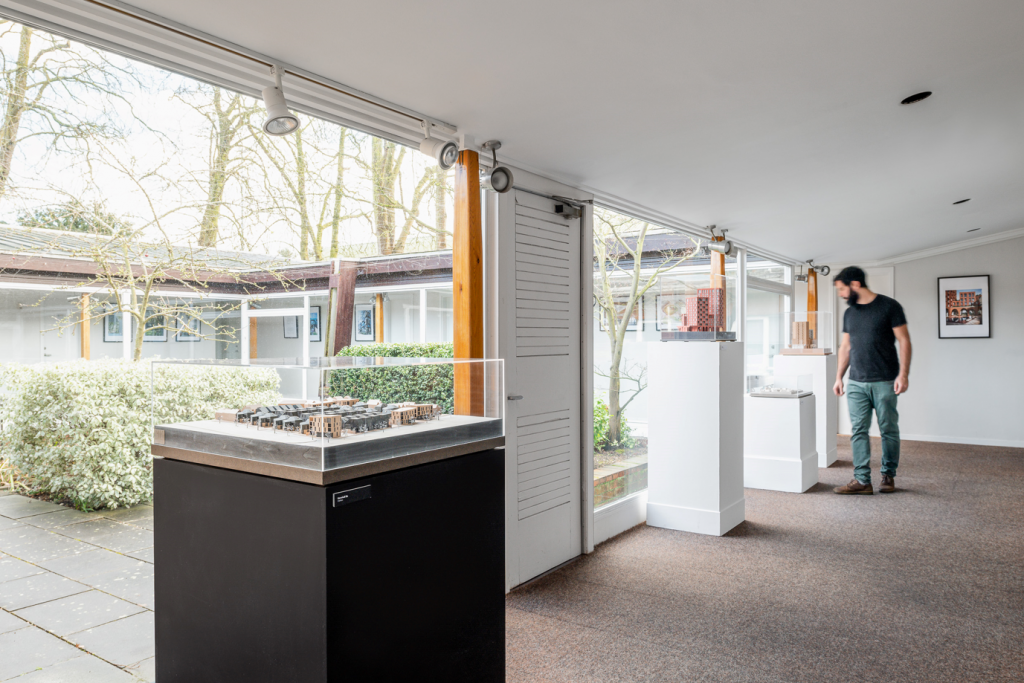
Alison Brooks Architects: Cultural Formations – Selected Works 2002-2022
One of the most exciting and innovative contemporary architectural practices, Alison Brooks Architects, was the subject of an exhibition at Clare Hall from 18 February–7 April 2022.
Exhibition details:
Models, mounted on pedestals, drawings and photographs represent 20 years’ work and include major building projects, such as that recently completed at Exeter College, Oxford. All are on show in Clare Hall’s main building, designed by Ralph Erskine, an Englishman who established a practice in Sweden and became part of Scandi Modernism. His work and that of Alison Brooks establish an immediate connection, through a sympathetic use of materials, an interest in simplicity and a desire for architecture that relates to a way of life and the needs of those who live or work in it.
Each of the displayed works demonstrates Alison Brooks Architects’ ability to reveal and translate social histories, urban archetypes and iconographies into contemporary space and form; at the same time, they celebrate locality and craft with a tectonically inventive architecture.
2021
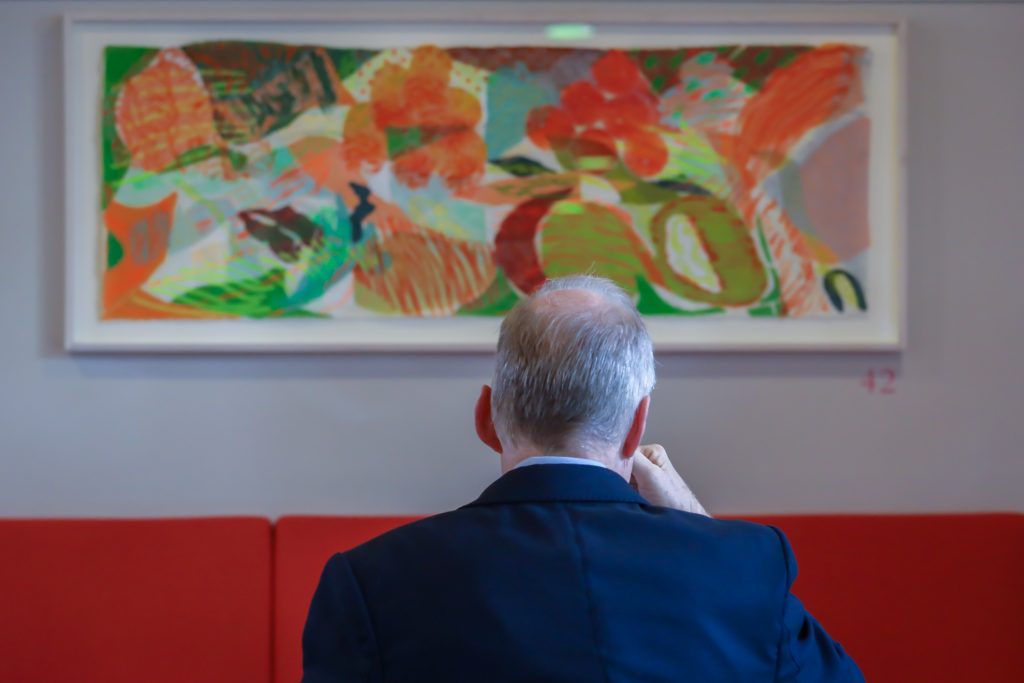
To Ithaka: an exhibition of paintings, drawings and pastels by Mark Cazalet
Clare Hall Art Committee presented an exhibition of work by artist Mark Cazalet, from 7 October-10 December 2021.
Exhibition details:
Our first exhibition this academic year is the equivalent of a firework display in its rush of energy and its multiple sparks of brilliant colour. Mark Cazalet is a dynamic artist, whose insight and enthusiasm for art make him a notable figure at the Royal Drawing School and a significant presence within the contemporary arts scene. Yet his artistic development has followed a singular path, out of step with many of the fast-changing fashions within art practice. His chosen media are traditional, but his awareness of the texture and feel of everyday life is intensely modern. Whether travelling abroad or on home territory, he is alert to the surface appearances of things and in his treatment of them seeks out further meanings. Looking at his art, one sometimes feels that everything seems to shimmer with vitality.
Mark Cazalet is a contemporary artist based in London and Suffolk, UK. He trained at Chelsea School of Art and Falmouth School of Art. Immediately after graduating he was awarded the French government’s National Studentship award to study in France. He studied at L’école des Beaux-Arts, in the studio of Christian Boltanski. Simultaneously to this scholarship, Mark was awarded a year at the Cite-des-Arts studio complex in the Marais. After a year back in London he went to M.S. University Baroda for an eighteen-month Association of Commonwealth Universities Scholarship to study under Professor Fulham Mohamed Sheikh. Since his return to the UK, Mark has held a number of residencies, and in 2012 and 2013 was artist-in-residence twice at The Anni and Josef Albers Foundation, Connecticut, US. He is a Senior Member of Faculty at The Royal Drawing School; teaches at West Dean College and The Edward James Foundation, Sussex; and is a Trustee of City and Guilds of London Art School.
Past exhibiting artists
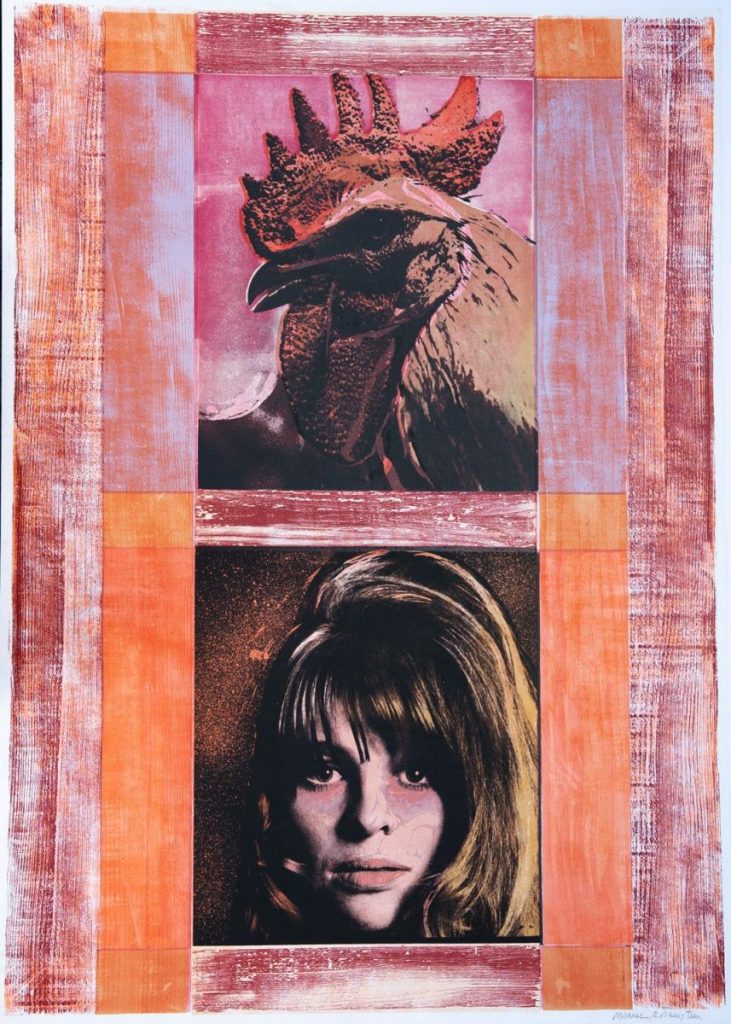
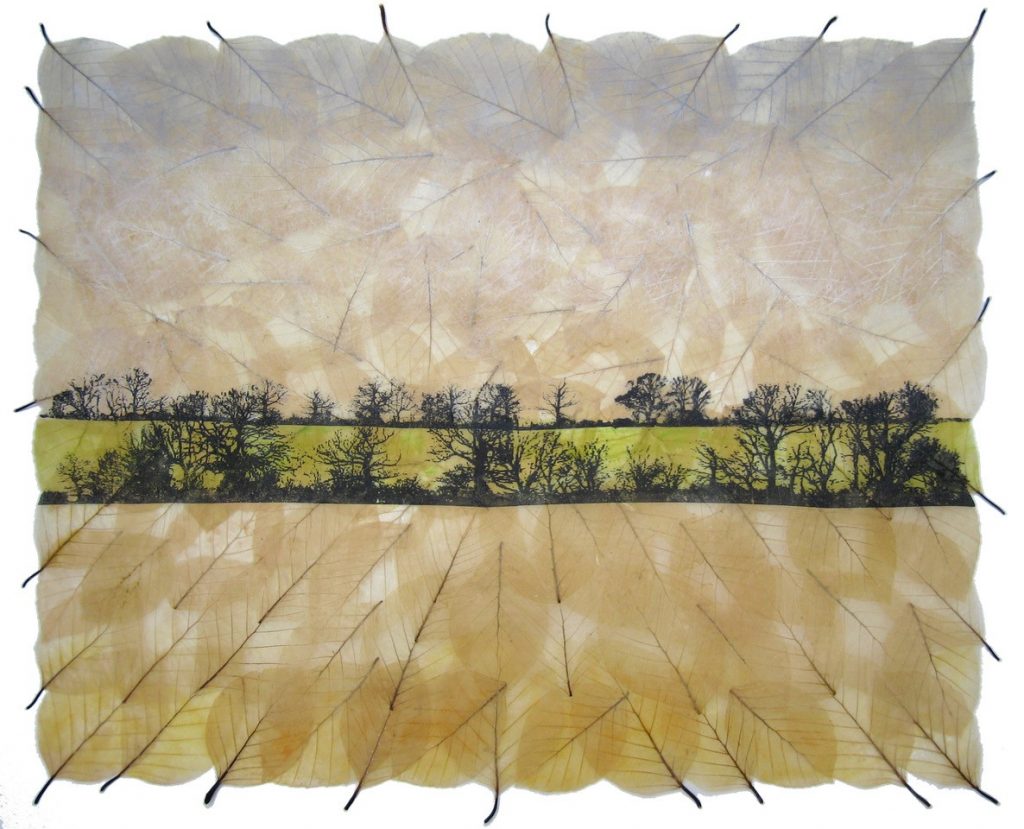
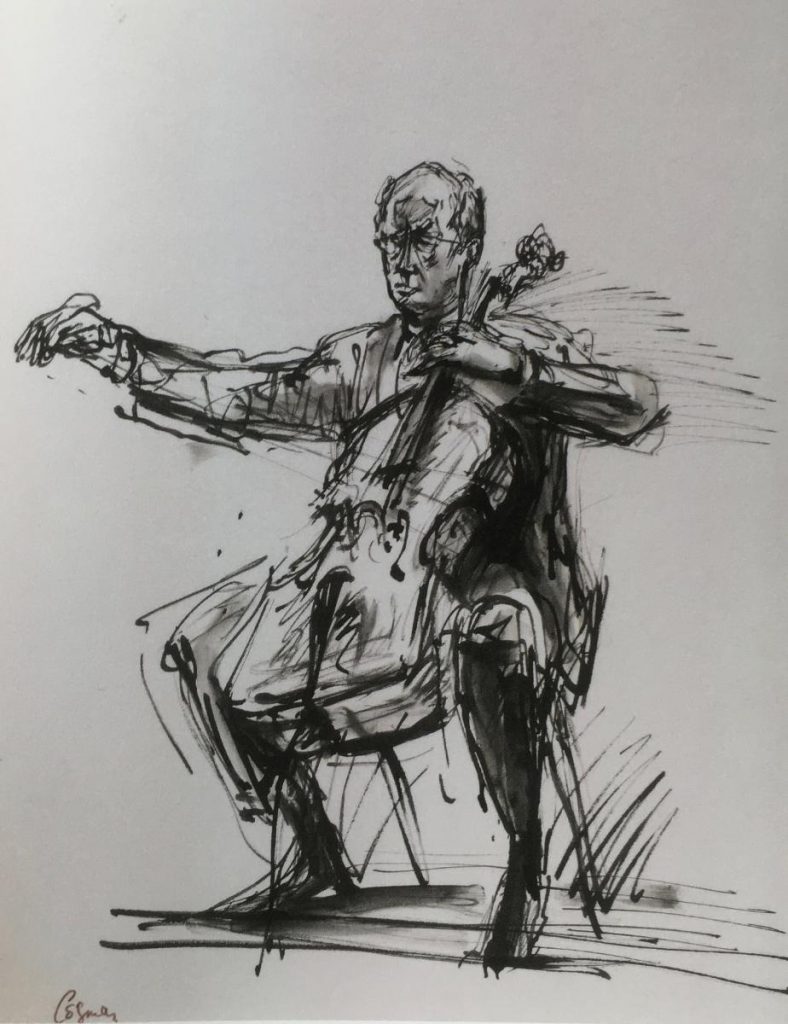
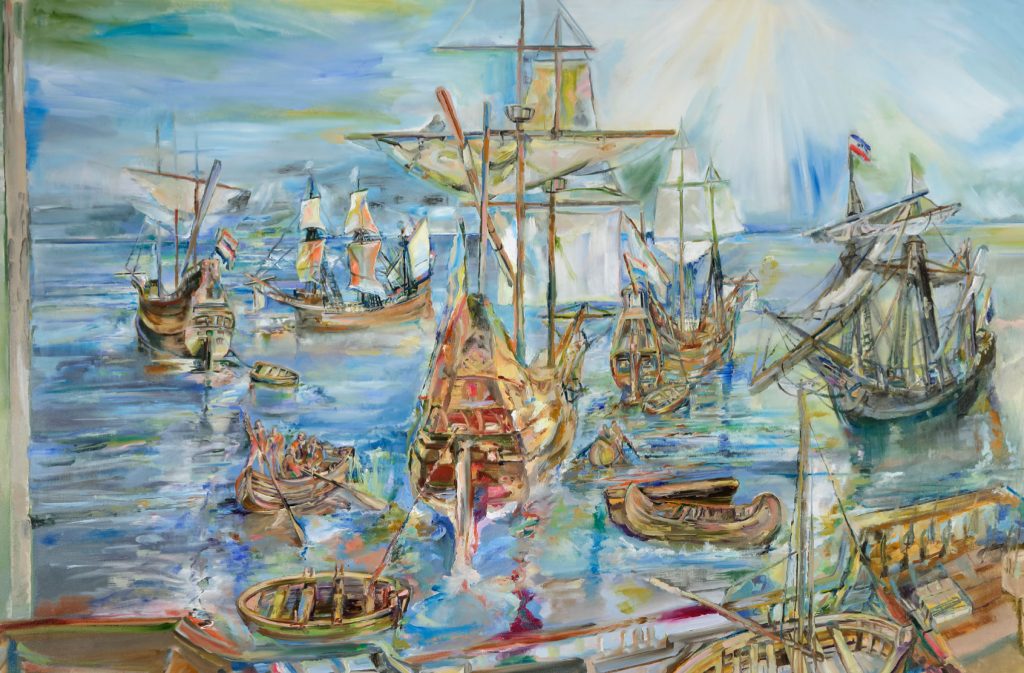
Artists whose work has been exhibited at Clare Hall include:
- Jasper and Jean Rose
- Nicholas Juett
- Michael Rothenstein
- Janet French
- Milein Cosman
- Chiara Briganti
- Stefan Luszczak
- Steven Mayes
- Mark Handley
- Jan Swart
- Gurpran Rau
- Michael Brick
- Lotte Atwood
- Robin Stemp
- Jake Attree
- Carol Sinclair
- Richard Bray
- Henryk Hetflaisz
- Di Bourne-Arton
- Nana Shiomi
- Rhonda Whitehead